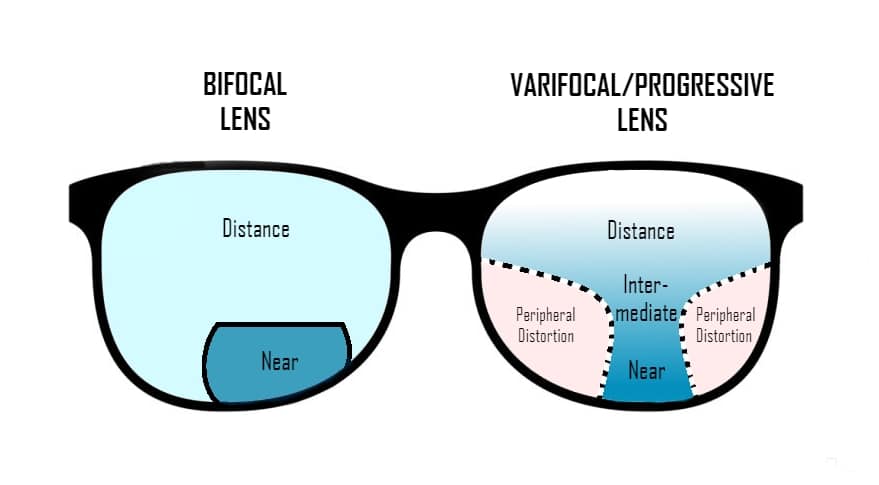Varifocals Vs Bifocals
Varifocal and bifocal lenses are prescription eyeglasses designed to correct multiple vision problems within a single lens, whereas the most common lens for glasses wearers is designed to correct only one vision problem. In addition to correcting hypermetropia, myopia, presbyopia, and astigmatism, both types of lenses are also capable of treating multiple vision disorders. They are specially designed to hold two different prescriptions, making it easier to see things at a distance and up close. In this case, it is no longer necessary to switch between two glasses if you possess both prescriptions. It is important to note, however, that both types of lenses display significant differences in their structure, performance, and overall benefits. It is important to understand these differences in order to make an informed choice.
Bifocal Lenses
Each lens of a bifocal lens contains two distinct parts – the top part is intended for distance vision, while the bottom part is intended for near vision. These two parts of a bifocal lens are separated by a visible line. Consequently, you can see things at a distance through the top part of the lens, while you can see things up close through the bottom part of the lens. Presbyopia, a condition related to aging where the eyes have to work harder to focus on objects up close, is commonly treated with these devices.
Wearers of bifocal lenses must shift their eyes above or below the visible line to focus on objects at the appropriate distance. This may require some practice, but will ultimately enable good vision at both close and far distances.
Among the primary advantages of bifocal lenses are their affordability and convenience, as they allow individuals who suffer from both near and distance vision problems to correct both problems with a single pair of glasses. As a result, there is no need to constantly change between two pairs of glasses, which is both inconvenient and time-consuming. A bifocal can also minimize the stress and headaches caused by focusing on close-up objects with distance lenses, thereby preventing eye strain and headaches.
It is possible to purchase bifocal glasses in a variety of styles and colours, making them a durable and stylish option for anyone who wishes to make a statement with their glasses or wish to maintain a subtle and classy appearance.
Varifocal Lenses
Similarly to bifocal lenses, progressive lenses provide multiple prescription strengths in a single lens. However, unlike bifocal lenses, there is no visible line separating the different prescription strengths from each other. As opposed to bifocal lenses, the prescription gradually changes from the top of the lens (for distance vision) to the bottom (for close-up vision).
In addition to providing a seamless transition between different prescription strengths, varifocal lenses are more aesthetically pleasing than bifocal lenses since they allow for a seamless transition between different prescription strengths. As well as having clear vision in the distance and close-up, varifocal lenses will also provide clear vision in the intermediate range, which is beneficial when you have complex vision correction requirements. Additionally, the eye does not need to make a distinct movement in order to switch between the desired vision corrections, which makes them a more natural alternative to bifocals.
Conclusion
A varifocal lens or a bifocal lens offers correction for multiple vision problems in one pair of glasses. Despite their similarities, each has some differences in structure, performance, and benefits that must be taken into account based on the individual’s preferences and needs. The bifocal lens has been around for many years and it is more affordable, whereas the varifocal lens offers a more natural vision experience due to enhanced peripheral vision, as well as greater flexibility when it comes to vision correction. The benefits of either of these lenses will vary depending on your individual preferences and vision needs.
















